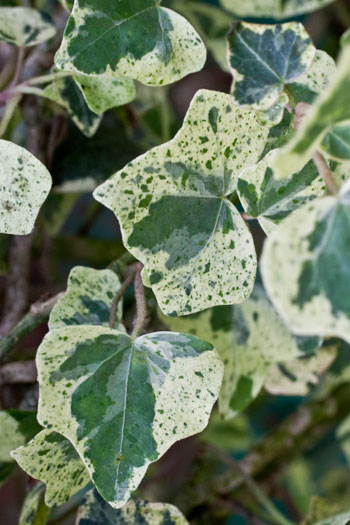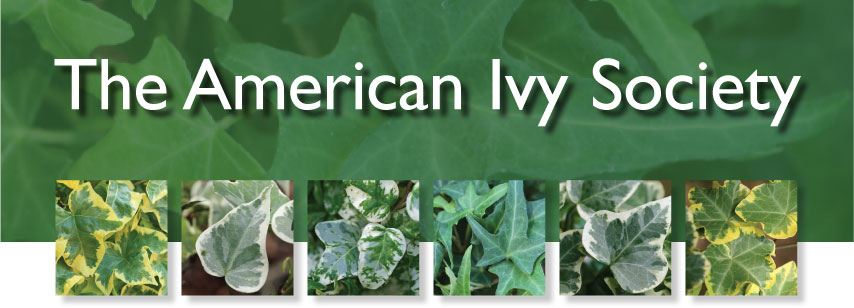|
Ivy of the Year 2014
Hedera helix ‘Teneriffe’ (Syn. ‘Teneriffe’ ‘Microphylla Picta’)

The American Ivy Society has selected Hedera helix ‘Teneriffe’ as Ivy of the Year for 2014. It is a unique, variegated, small-leaved ivy that‘s been around a long time and called by several names: The 1862 catalog of Haage & Schidt called it ‘Microphylla Picta’ – but without a description.
In 1966 Brother Ingobert Heieck of the Stift Neuburg Monastery Nursery in Heidelberg received an unknown cultivar from Spain. He called it ‘Teneriffe’.
In 1968 Mr. Terry Jones collected an ivy in Tenerife in the Canary Islands that he could not identify and passed it on to Steven Taffler, British Ivy Society president who introduced it to the trade in both Britain and America. He called it ‘Tenerife’ – with one ‘f’. It was later found to be identical with what Heieck was growing. Most believe it was the same as the ‘Microphylla Picta’ in the 1862 catalog, but without a description, even the experts could not be sure, and so it became ‘Teneriffe’ as named by Heieck.
The spelling ‘Teneriffe’ takes precedence over ‘Tenerife’ because it was the earlier spelling used by Heieck in the first official description – and thus has precedence over any subsequent spellings.
The variegation of ‘Teneriffe’ is a combination of green blotches, speckles and dots on a yellowish-cream leaf. Three shades of green are present: a dark forest green, a medium shade of gray green, and a light gray-green. The background color varies from nearly white-cream when grown in the shade to a definite yellow-cream in full sun.
The amount of green on a particular leaf varies greatly. Some leaves are nearly covered with large blotches of the combinations of the three greens. Other leaves are only half covered, and still other are nearly all cream. However speckles and dots appear on almost all the leaves of ‘Teneriffe’. The dots are what make this cultivar distinct from all others. ‘Teneriffe’ is a moderately self-branching ivy. If left uncut it usually forms long, trailing stems with little branching.
For successful outdoor planting of ivies, the Society reminds gardener to plant deep, removing several of the lower leaves and planting to the new lowest leaves. Ivy will root along the new stem, helping it to become established.
Click Here for Press Photo
Click Here for Ivy of the Year List of Past Years.

|
